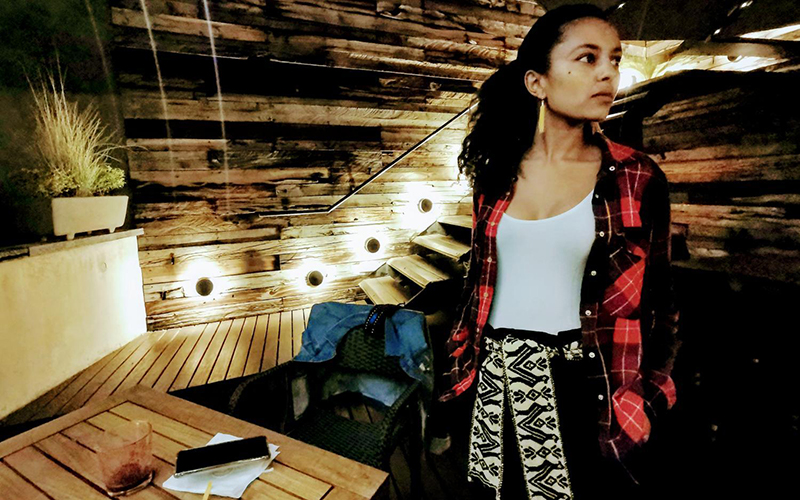
Tizita Tafa, an American tourist, came to Mexico from Boston in hopes to escape lockdown back in the U.S. (Photo courtesy of Rodrigo Cervantes/KJZZ)
MEXICO CITY – The pandemic has dealt a severe blow to tourism in the U.S. and Mexico. But people from both countries have begun to cross the border, and for the same reason: They’re running away from COVID-19.
Tourism is a significant source of income for Arizona and many other U.S. states, and for Mexico. Even before the pandemic, U.S. travelers were common in Mexico’s tourist spots.
Tizita Tafa came to Mexico from Boston as 2021 started.
“We all work from home remotely, so it didn’t really make any sense to stay home if all we’re going to do is work, eat, go to sleep,” Tafa said, chuckling.
She said it didn’t make any sense to work from home facing a cold winter, the U.S. political unrest and the lockdown – but she didn’t know that Mexico also had its own restrictions.
“To be honest, I was not aware of the fact that everything was in lockdown,” Tafa said. “I thought things were actually better, which to be honest is much better than how the United States is.”
Mexico feels safer than the U.S., she said, with a lot of people following social-distancing and mask guidelines. She rents AirBnb properties and follows health protocols.
“There’s definitely a whole different thing arriving to Mexico than arriving to Florida,” she said.
She said she agrees with the Biden administration requiring a coronavirus test to enter the U.S. For her, every country should be careful with its tourism because travelers like her represent economic aid to countries reliant on tourists.
And Mexico is one of those countries, said Roberto Zapata, tourism vice president of Mexico’s National Chamber of Commerce.
Saved by snowbirds and vaccines
American tourists have been very important to start 2021, he said.
“Past December was awful, it was pretty lousy, but it turned out to be better by the very end of the month that we start receiving snowbirds, mostly in beach resorts,” Zapata said.
Mexico’s tourism sector last year reported 39% less income compared with 2019, he said.
Zapata said Americans visiting Mexico consider Mexico a safe destination and are settling in for lengthy stays. Some hotel visitors are requesting tools for work, such as hi-speed internet, he said, as well as facilities for their children to take classes remotely.
“We have noticed how the Americans, they have extended their stay here in Mexico,” Zapata said.
However, Mexican tourism is far from recuperating, he said, particularly because Europeans, who represent almost 39% of Mexico’s annual visitors, still face strict travel restrictions.
Another important element of Mexico’s hospitality industry is American business travel, which also is paralyzed. But greater distribution of COVID-19 vaccines has raised Zapata’s expectations for the second quarter of 2021.
Travel is where the safety is
Mauricio González is head of CWW Mexico, a firm representing such destinations as Arizona, Oregon, Chicago and Florida. U.S. travelers during the pandemic are like students on spring break: They come to Mexico because the rules are more relaxed, he said, but tourists fleeing the pandemic also are traveling south to north.
González said more spontaneous trips are being made, mainly as a result of airline deals and travel packages during the pandemic. Mexicans made about 40% fewer trips to the U.S. last year, he said. But a study by his firm reveals that Mexicans still go to the U.S. because they feel safe.
“The rules are way much more strict in the States, but also that makes you feel way much more safe than in Mexico,” he said.
González says Mexican visitors are getting used to the U.S. requirements, and travel likely will ramp up again by Easter. He said Mexico remains the No. 1 tourism market for Arizona, Houston, and Kissimmee, Florida.
“Before the last quarter, everyone was struggling, but we saw a recovery for the last part of the year,” González said.
Tourism will survive, he said, if the private sector works together and follows safety protocols on both sides of the border.
“As far as the traveler feels safe wherever they are going, they are traveling,” González said.
The Fronteras Desk is a unique KJZZ project that covers a wide expanse of an undercovered news desert that stretches from northern Arizona deep into northwestern Mexico.

